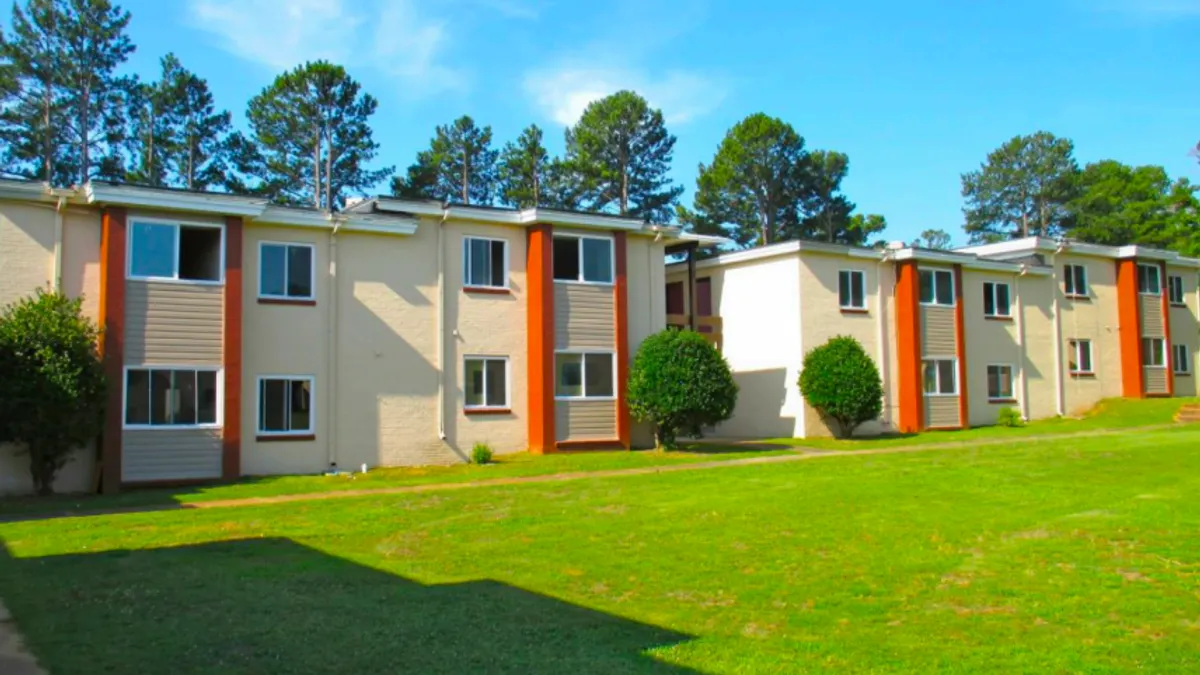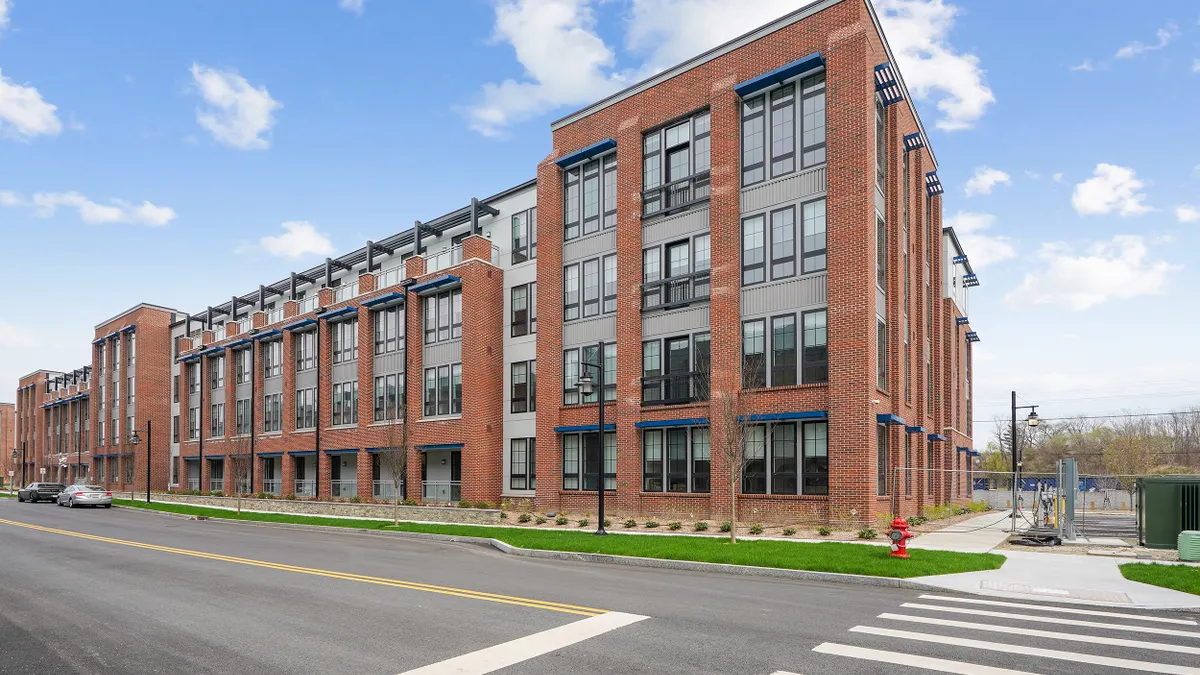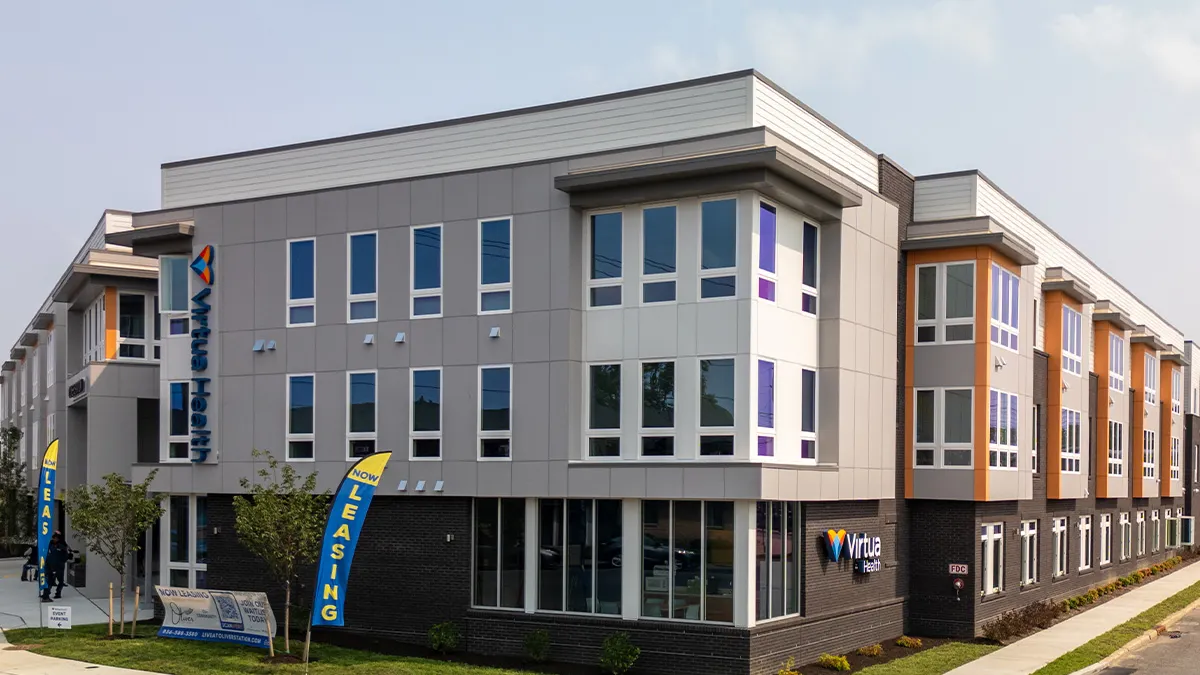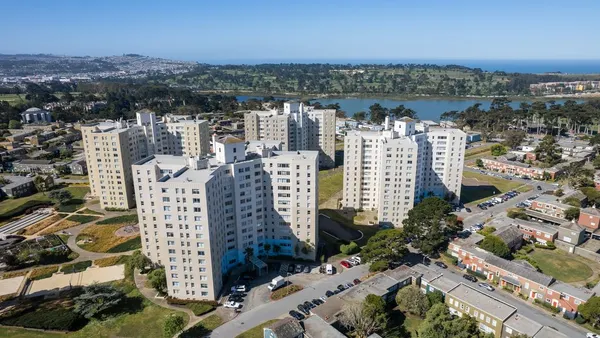Essex Property Trust posted same-property revenue growth of 2.7% year over year for the third quarter of 2025 and grew its core funds from operations per share by 1.5% YOY, exceeding the company’s guidance range.
By region, revenue change was slightly down compared to the REIT’s second quarter, but the company reaffirmed its full-year guidance midpoints for same-property revenues, expenses and net operating income growth.
Essex, whose portfolio is located exclusively on the West Coast, reported its best performance in Northern California, where its Q3 revenue was up 3% year over year. On a Thursday earnings call with analysts, CEO Angela Kleiman said the Bay Area, and particularly San Francisco and Santa Clara counties, were generating the highest rent growth for the year to date.
Kleiman attributed the momentum to strong rent-to-income ratios stemming from an increase in artificial intelligence startups in the region and “above historical average migration trends.”
The company’s Seattle region also saw a 3% revenue increase, but Kleiman said on the call that while the area was healthy, it was trending at the low end of Essex’s full-year expectations, due primarily to challenging year-over-year comps, soft demand and “pockets of supply temporarily limiting pricing power in certain sub markets.”
In Southern California, third-quarter revenue was up 2.4% year over year, which Kleiman said was in line with company expectations. The Los Angeles area, which represents 18.5% of the company’s total revenue, lagged behind Seattle, San Francisco and Santa Clara County, posting a soft 2.3% growth for the quarter. Kleiman attributed the weakness to delinquency, recovery and muted job conditions.
Tech impacts Northern California
One driver of growth in Essex’s Northern California region has been an influx of job postings and new tech company formations, which has in turn created demand, particularly for small office space.
“We certainly are seeing a steady strength in the northern region,” Kleiman said. “And when we look at the top 20 tech postings, the postings have remained steady, with September, a slight uptick in California, mostly benefiting from the northern region to San Francisco, San Mateo, and, of course, the Santa Clara counties.”
Kleiman added that while it’s challenging to provide exact numbers, Essex has been seeing more startups than ever, and anecdotally, “office space less than 10,000 square feet [is] in hot demand. And that is, you know, a new phenomenon that we've not seen in the past.”
While Northern California is still in a recovery phase, Kleiman said, the area is “getting more rents [that] are relative to pre-Covid levels.”
Seattle soft but stable
In Seattle, demand has been softer, said Kleiman, adding that the REIT had expected demand to moderate throughout the year on a national level.
“Seattle does not have the benefit of the AI startups that Northern California does,” she said. “You know, Northern California has 80% of the AI business, so Seattle is going to be…more in line with the U.S. average at the current cycle.”
Kleiman said that despite reports earlier this week regarding layoffs at Seattle-based tech company Amazon, Seattle’s larger housing market would not necessarily be impacted
“When our team dug into the WARN notices…less than 10% of the layoffs [were] Seattle-specific,” Kleiman said. “So this leads us to believe that this is not a market [where] we're seeing red flags. It's a market that's stable. It's still performing well. Certainly, it's not reaching … the above-average CAGR growth that we had hoped. But it's still a good market, and with next year's supply going down by almost 40% it's going to do just fine.”
Another challenge to Seattle’s housing market has been legislative.
Washington State enacted rent control, effective in May. Kleiman said that the state’s legislators “understand the need to protect tenants from price gouging” but also understand that heavy regulation is counterproductive.
“It's going to reduce housing production and community investment, which ultimately results in higher costs all around,” she said, adding that she didn’t expect any further legislative changes in the near future, despite the potential for a shakeup following next week’s local elections.
Los Angeles, San Diego weak
The Southern California market has been mainly impacted by weakness in San Diego and Los Angeles, said Kleiman.
“[Los Angeles] has been a drag, but that's not a surprise to anybody,” Kleiman said. “In terms of our blended [leases] for the third quarter, Southern California came in at around 1.2% and Northern California close to 4% and Seattle right in the middle, at about two.”
Kleiman said new leases in Los Angeles were “negative once again, but that's not unusual for this time of the year,” which led new rents to drop 100 basis points in Southern California. Meanwhile, September renewals were at about mid-3% for Southern California, with Los Angeles in the low 3% range.
“What we're seeing right now, with supply decreasing and occupancy stabilizing in [Los Angeles], we wouldn't expect more pressure on new leases next year versus this year,” Kleiman said.
Occupancy net of delinquency has been steadily increasing, rising above 94% in October.
“So that tells us that this market is stable, and there [are] underlying fundamentals to support the stability and potentially growth,” Kleiman said.
BY THE NUMBERS
| Category | Q3 | YOY Change |
| Property revenues | $412.7 million | 2.7% |
| Net operating income | $285.9 million | 2.4% |
| Operating expenses | $126.8 million | 3.5% |
| Funds from operations | $4.03 | 5.8% |
| Rent per unit | $2,718 | 2.5% |
| Occupancy rate | 96.1% | -10 bps |
SOURCE: Essex
















